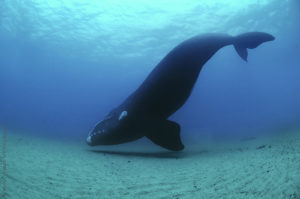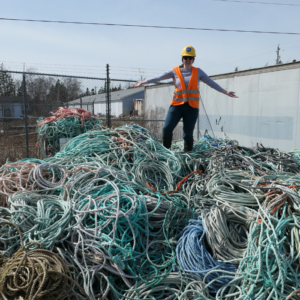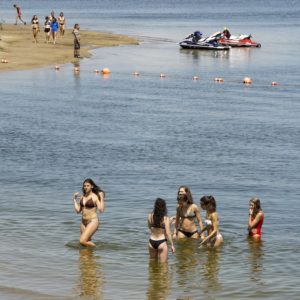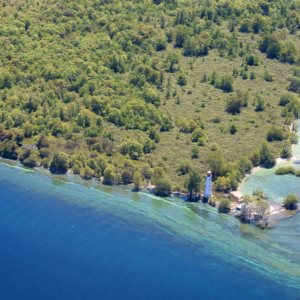Making things right: Protections for Right Whales on Canada’s east coast
On Feb. 7 2019, Federal Fisheries Minister Jonathan Wilkinson and Transport Minister Marc Garneau announced new rules to try and protect Atlantic Right Whales on Canada’s east coast.
They include mandatory speed restrictions for large vessels, temporary fisheries closures, mandatory reporting of all lost gear and mandatory gear marking to be phased in by 2020. The new measures are meant to protect migrating whales, who risk entanglement in gear and collision with fast moving ships.

A photo of the Southern Right Whale. Northern populations of the Right Whale are critically endangered. Photo/Brian Skerry
A deadly year
While there’s plenty of food in Canadian waters, there is also danger.
In 2017 – around the same time many Canadian families were prepping for Canada 150 road trips – Atlantic Right Whales off the coast of southern United States were preparing for their own trip. Every year, the population makes the long journey north to the rich feeding grounds in the Gulf of the St. Lawrence.
Sadly, in 2017, it wasn’t a holiday for many of our marine visitors. That year 12 Atlantic Right Whales found dead in the Gulf of the St. Lawrence.
Collision with boats and entanglement in fishing gear are two deadly hazards facing the whales, in an area that is both a important migratory passage and a busy shipping area. The species are critically endangered, with only around 450 left.
Busy waters
Right Whales aren’t the only ones making their way up the coast.
Canada’s maritime waters are a busy place in the summer. Over 20 species of marine mammals come home to the Laurentian Channel – also known as the Laurentian Whale Passage – for summer and fall feeding. Those species include Leatherback Turtles, Humpback Whales, Minke Whales, Fin Whales, Blue Whales and Belugas.
Some of these species, including the Right Whale, are tracked by Dalhousie University in the On Alert for Whales project, which also shows fishery closures and current protected areas. Real-time whale tracking can help the government introduce temporary speed restrictions and closures when a whale is spotted in the area.
Along with Right Whales, the map also has historical sightings of Sei Whales, Humpback Whales, Blue Whales and Fin Whales.
Want to help?
Nature Canada is glad to see the government paying close attention to the future of this critically endangered species. Of course, there’s also more to be done. The map above shows protected areas in green. The government has already recognized the Laurentian Channel – also known as the Laurentian Whale Passage – as an important ecological area worth protection.
We’re asking the government to make the area a full Marine Protected Area that prioritizes the lives of wildlife like Right Whales, Leatherback Turtles and Northern Wolffish.
Time to make waves. If you haven’t already, please consider signing our petition to make the Laurentian Whale Passage a Marine Protected Area.




